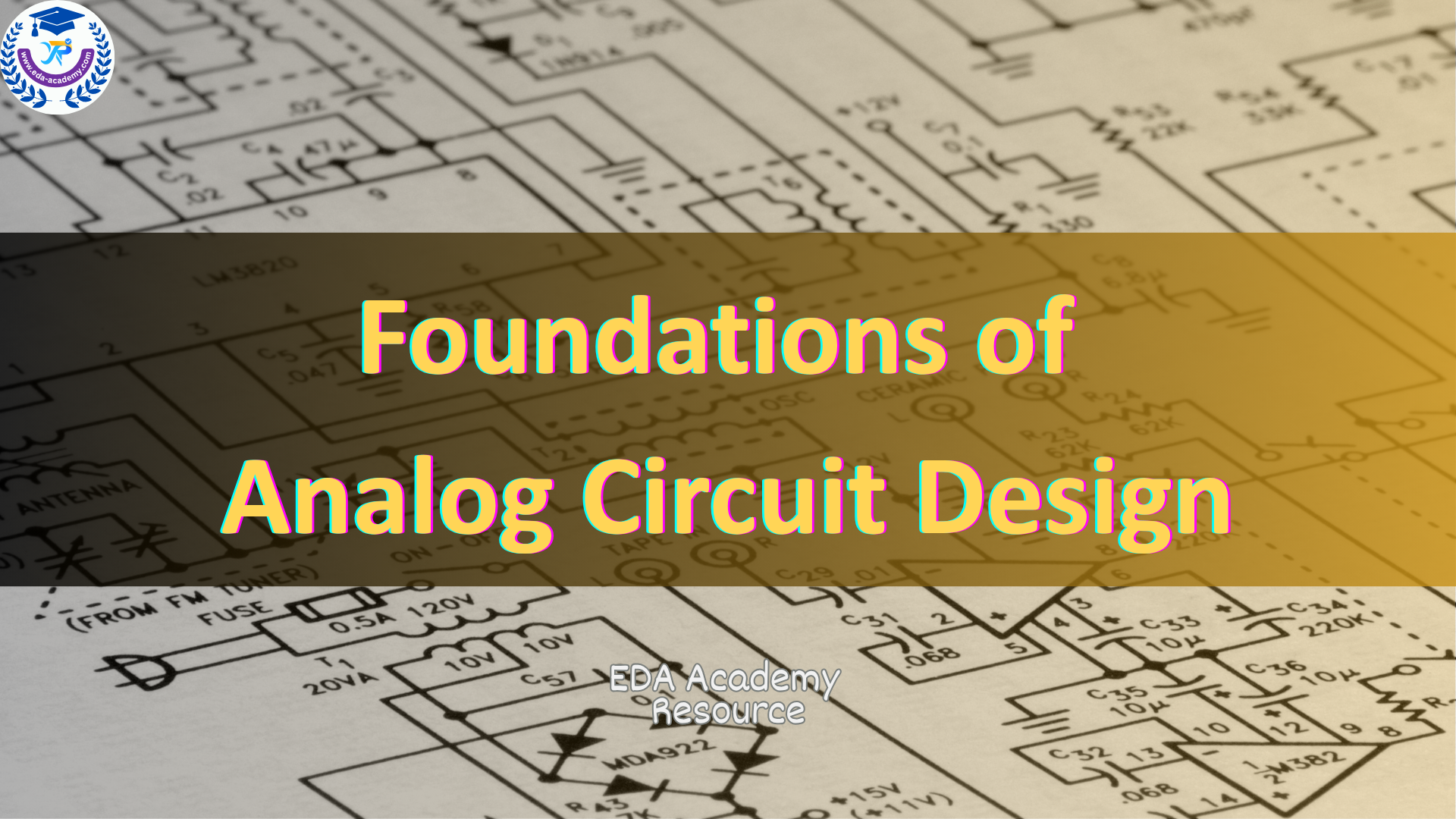Resource:
Foundations of Analog Circuit Design (English)
Analog circuit design plays a critical role in bridging the digital world with continuous real-world signals. This domain focuses on the precise handling of voltage, current, and frequency to enable sensing, control, communication, and power management in electronic systems. Emphasis is placed on signal integrity, noise mitigation, and robust performance under physical and environmental variations. Key principles include the distinction between analog and digital signals, abstraction levels in design, and the diverse applications of analog ICs across multiple industries such as instrumentation, data conversion, and control systems.
Purchase
Our course syllabus is regularly updated to reflect the latest advancements and best practices in the field. For individually purchased courses or resources with lifetime access, students can always access the content and receive updates for free. For members, all member-free courses and resources — including future updates — are accessible during the active subscription period. This ensures that both lifetime purchasers and active members can benefit from the most relevant and up-to-date content.
Created by EDA Academy
English
Last updated June 2025

Resource: Foundations of Analog Circuit Design (English)
OR
USD $89.9
-78%Today
$19.9
One-time Purchase
& Lifetime Access
What you will get:
1.3 Hours of Immersive, High-Quality Video Lessons
Professionally produced and delivered by our expert team, covering core concepts and practical demonstrations, with step-by-step explanations and real-life examples to help you efficiently absorb knowledge and apply it immediately in a short time.
Certificate of completion
Upon successful completion of the course, you will receive an official certificate issued by EDA Academy, adding value to your resume and career development.
Access on mobile and computer
The course can be viewed anytime on mobile phones, tablets, and computers, allowing you to learn easily whether at the office, at home, or on the go.
Ongoing support from EDA Academy
After the course ends, you will continue to receive ongoing support from our team to help you consolidate knowledge and solve practical problems.
Further learning plan
Provides you with follow-up learning paths and recommended resources, enabling you to continue improving your skills and expanding your career development based on what you have learned.
Resource Catalogue
Description
Analog design represents one of the most technically intricate areas within integrated circuit development. Operating with continuous signals, analog circuits must manage voltage, current, and frequency variations with exceptional precision. These circuits function as critical intermediaries between the physical environment and digital logic, ensuring that real-world phenomena—such as temperature, light, sound, and pressure—are correctly interpreted and controlled. Each element in the design, from a single transistor to a complex amplifier block, must be crafted with attention to detail to maintain signal fidelity, stability, and low noise across a broad range of conditions.
The practical implementation of analog functionality demands a deep understanding of electrical behavior and a methodology centered on component-level interaction. Unlike digital design, which benefits from abstraction through synthesis and standardized flows, analog design requires direct manipulation of electrical characteristics. Designers must consider parasitic effects, temperature drift, device mismatch, and process variability, all while achieving strict performance metrics. Transistor-level schematics, layout symmetry, and physical routing influence outcomes as significantly as theoretical calculations, making experience and intuition essential to success.
At the system level, analog subsystems are indispensable across a wide variety of applications. Control loops stabilize dynamic environments in industrial and automotive contexts. Data converters enable accurate sampling and reconstruction in communication and multimedia platforms. Power circuits regulate supply levels for everything from smartphones to servers, and analog front-ends manage sensor signals in medical and environmental monitoring. The diversity of these applications reveals the scope and depth required to achieve robust, manufacturable analog solutions within modern integrated circuits.
Modern advances have not diminished the importance of analog techniques. Digital-assisted analog circuits now utilize digital calibration to compensate for analog limitations, enhancing both performance and manufacturing yield. Mixed-signal integration blends analog and digital domains onto a single chip, optimizing system efficiency while introducing new challenges in interference, grounding, and layout. Understanding the full development flow—from specification, simulation, and schematic design to layout, verification, and testing—enables precise control over both functional performance and production scalability.
Abstraction in analog design exists across multiple levels, each offering trade-offs between complexity and insight. Device-level modeling provides detailed analysis for small-signal behavior, while system-level abstraction allows rapid performance estimation and specification development. Mastery of these levels supports efficient transitions from design intent to silicon implementation. Success in analog IC development stems from the ability to unite physical constraints with engineering creativity, yielding high-performance designs capable of operating in unpredictable, real-world environments.
We HATE spam. Your email address is 100% secure
The document will be emailed to you. Please check your Spam folder if it doesn’t appear in your inbox.
We HATE spam. Your email address is 100% secure
